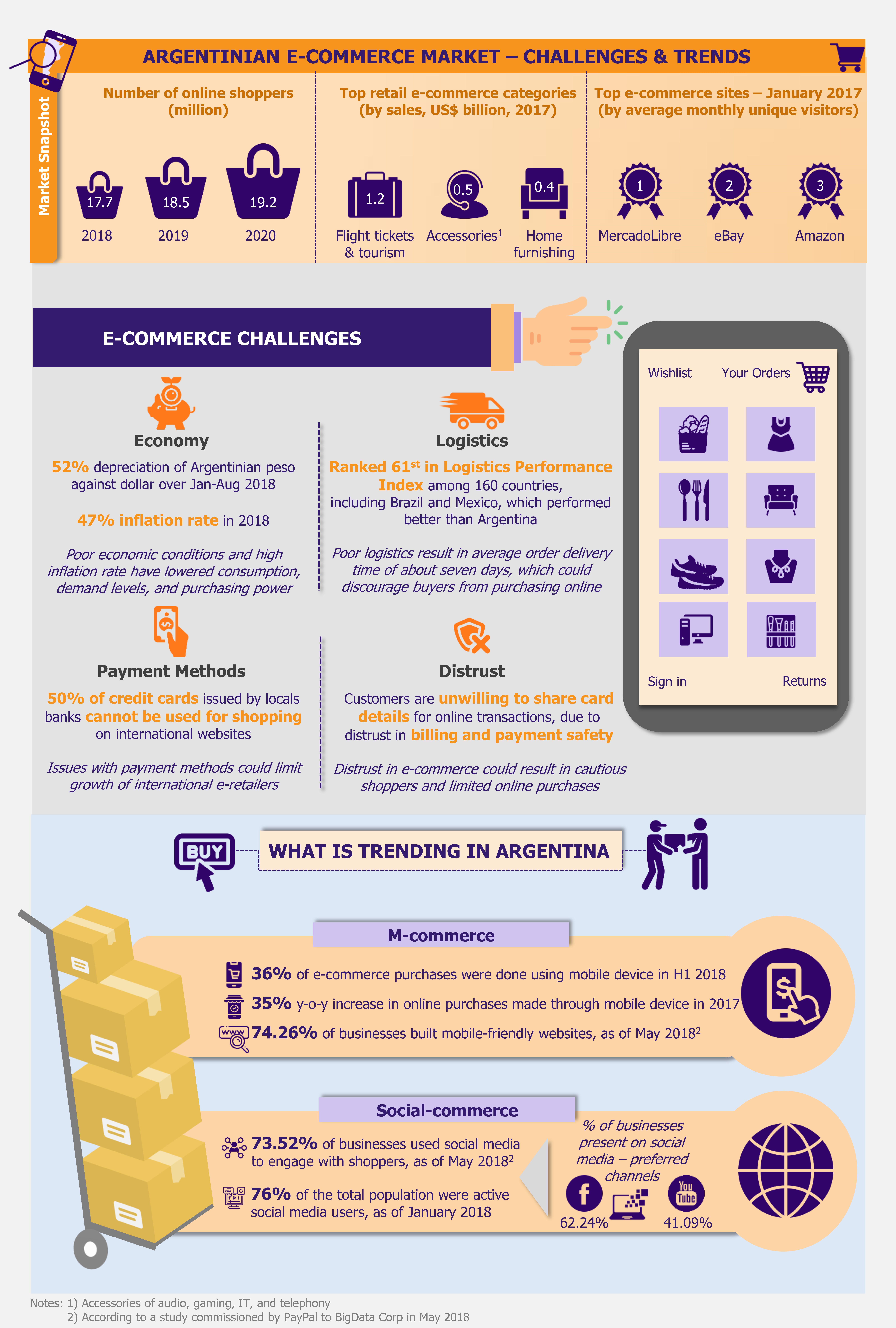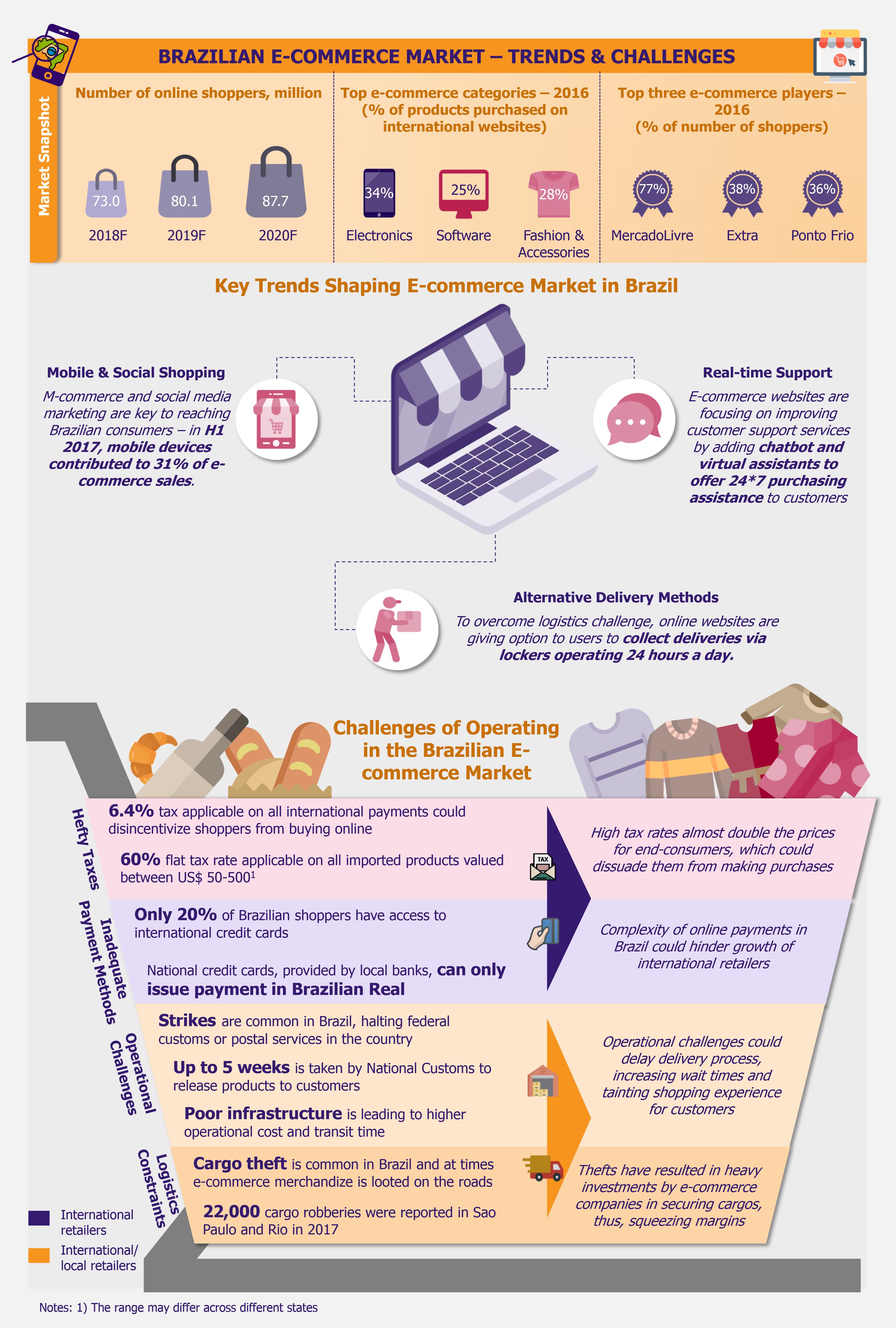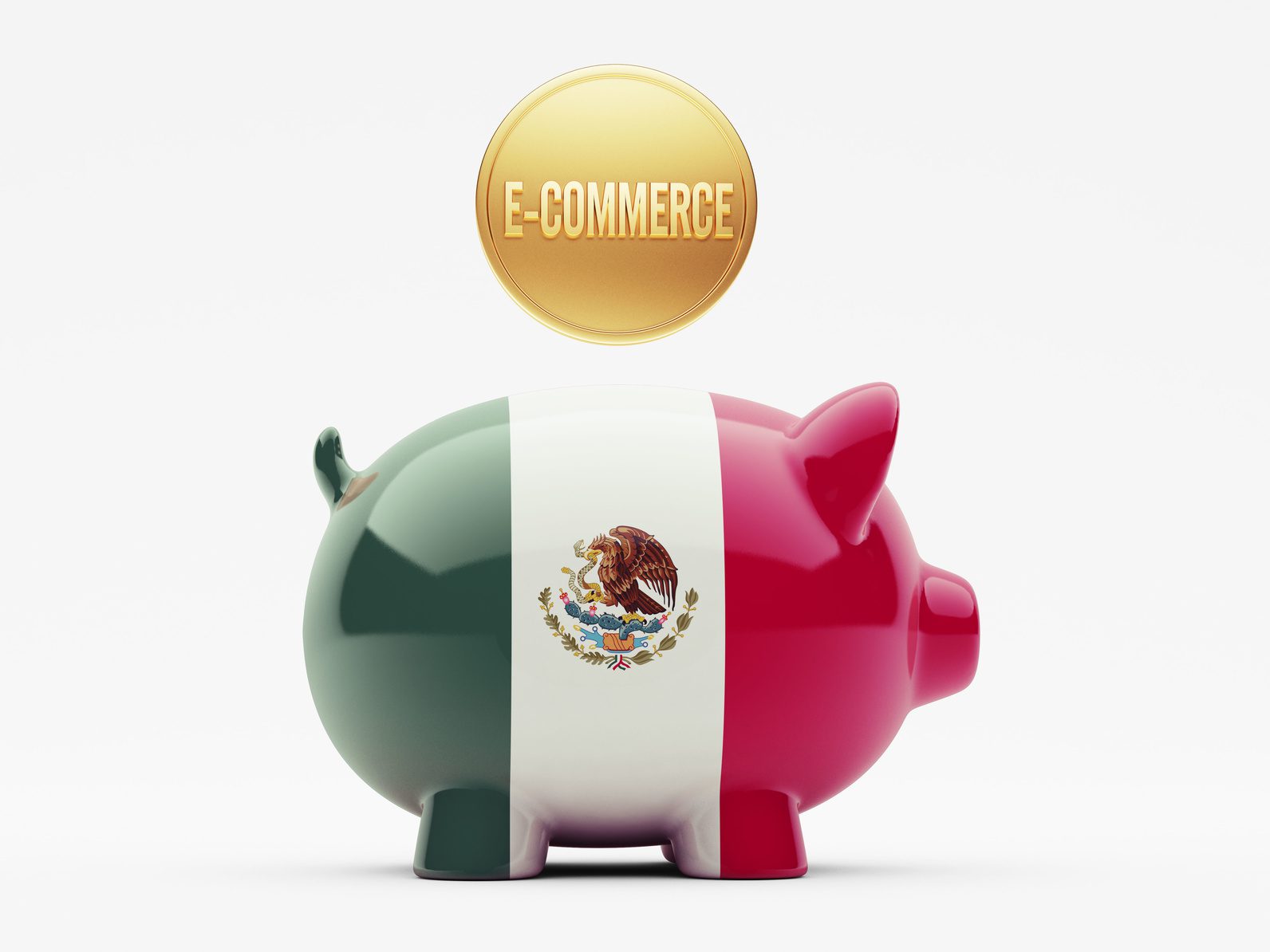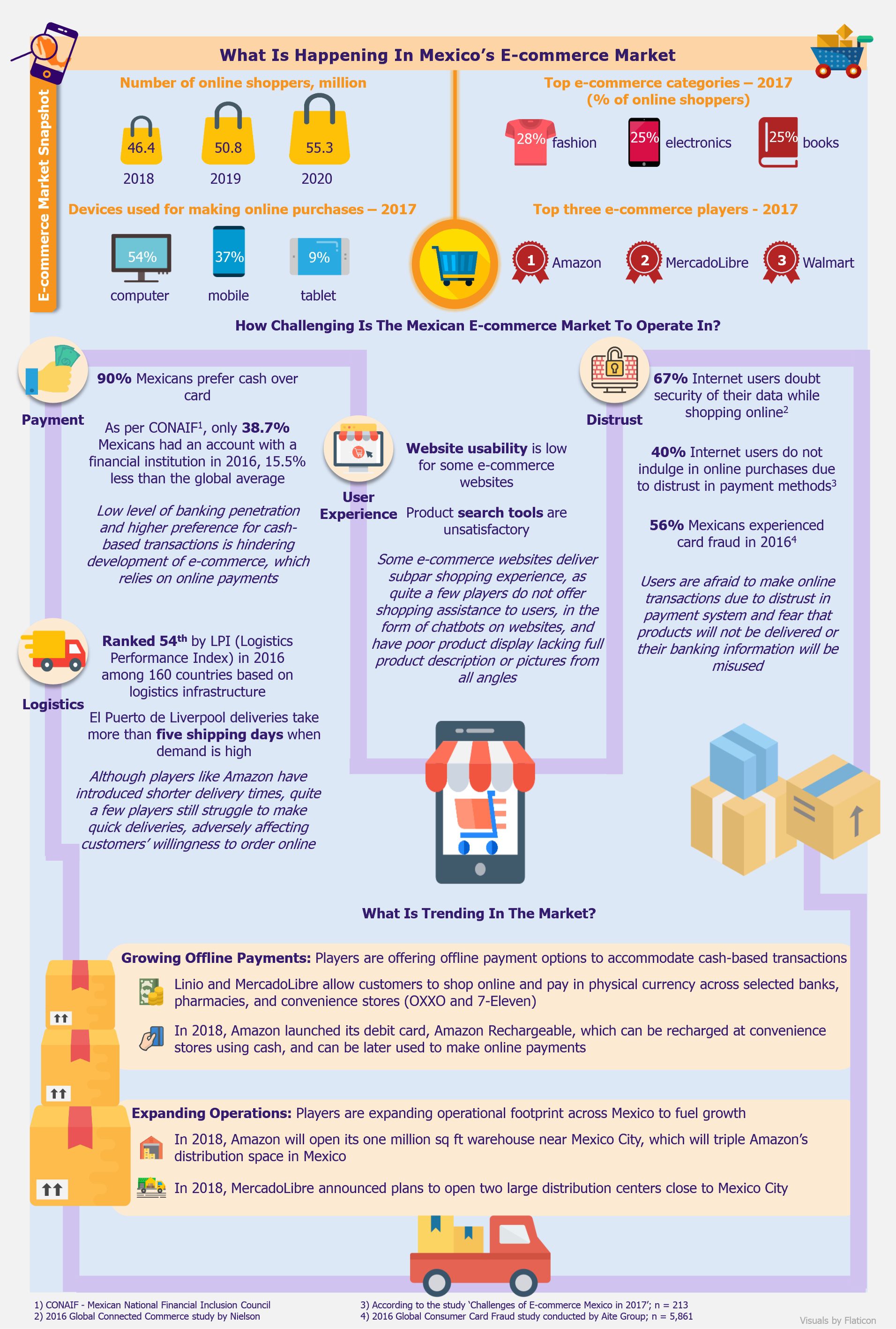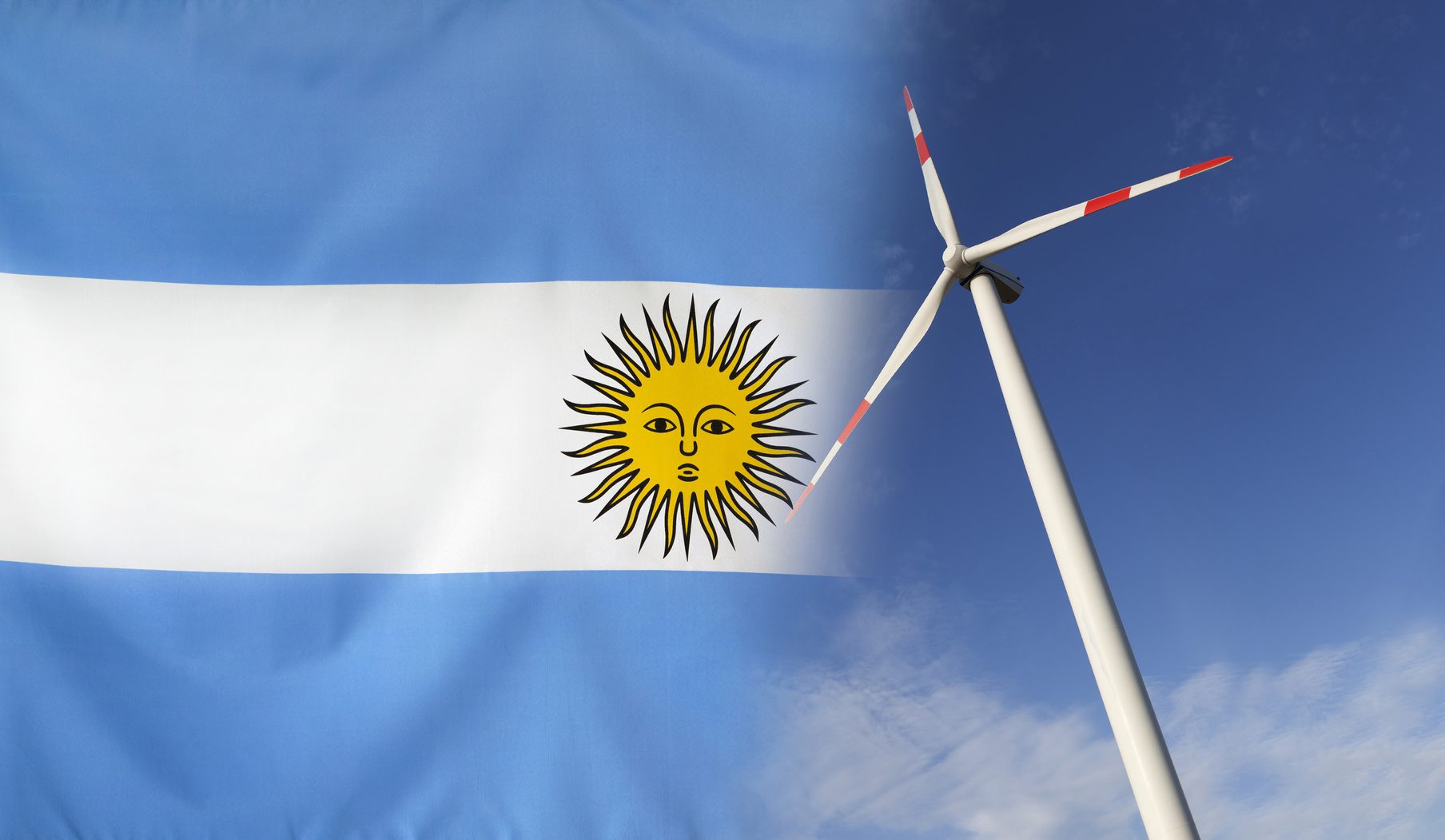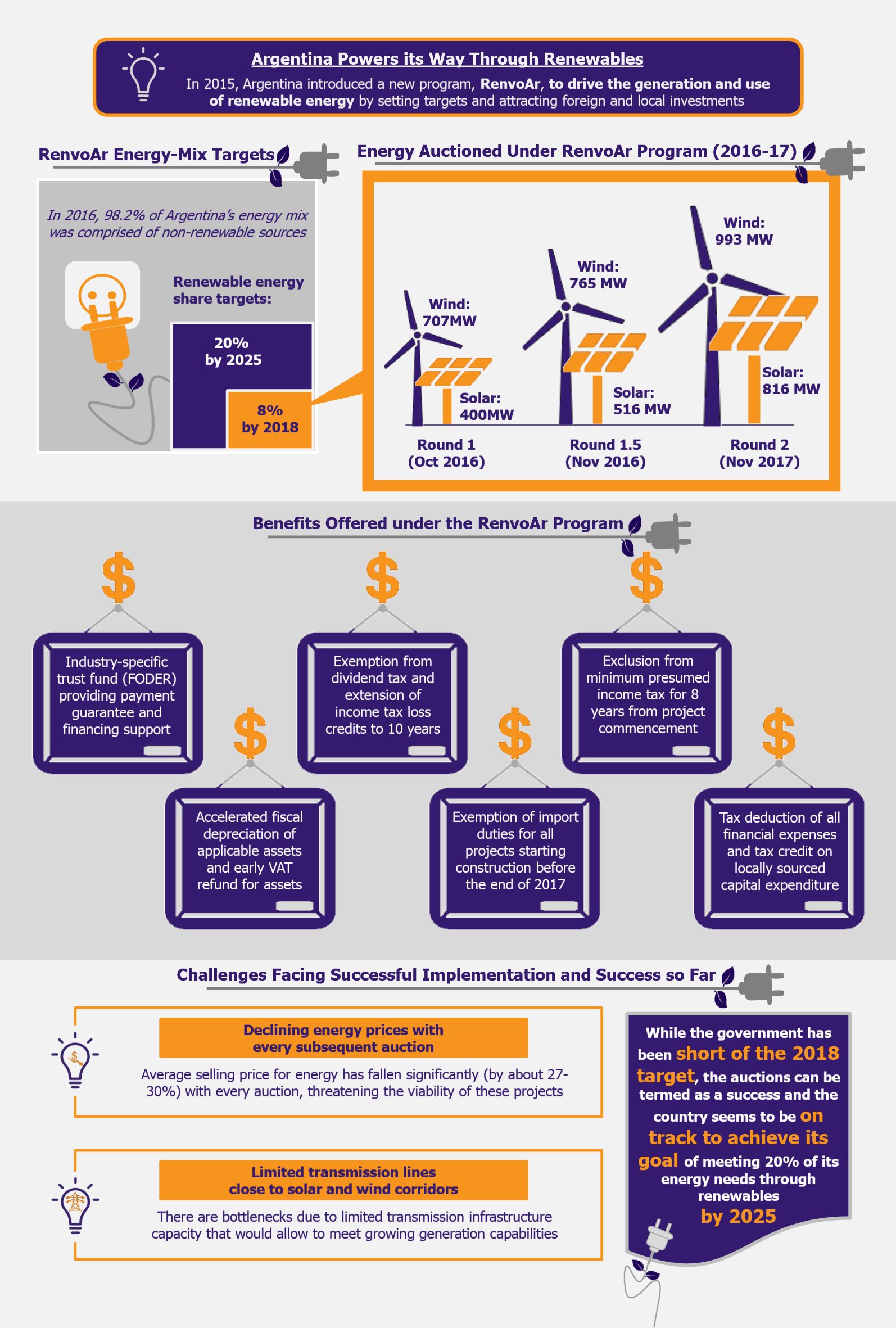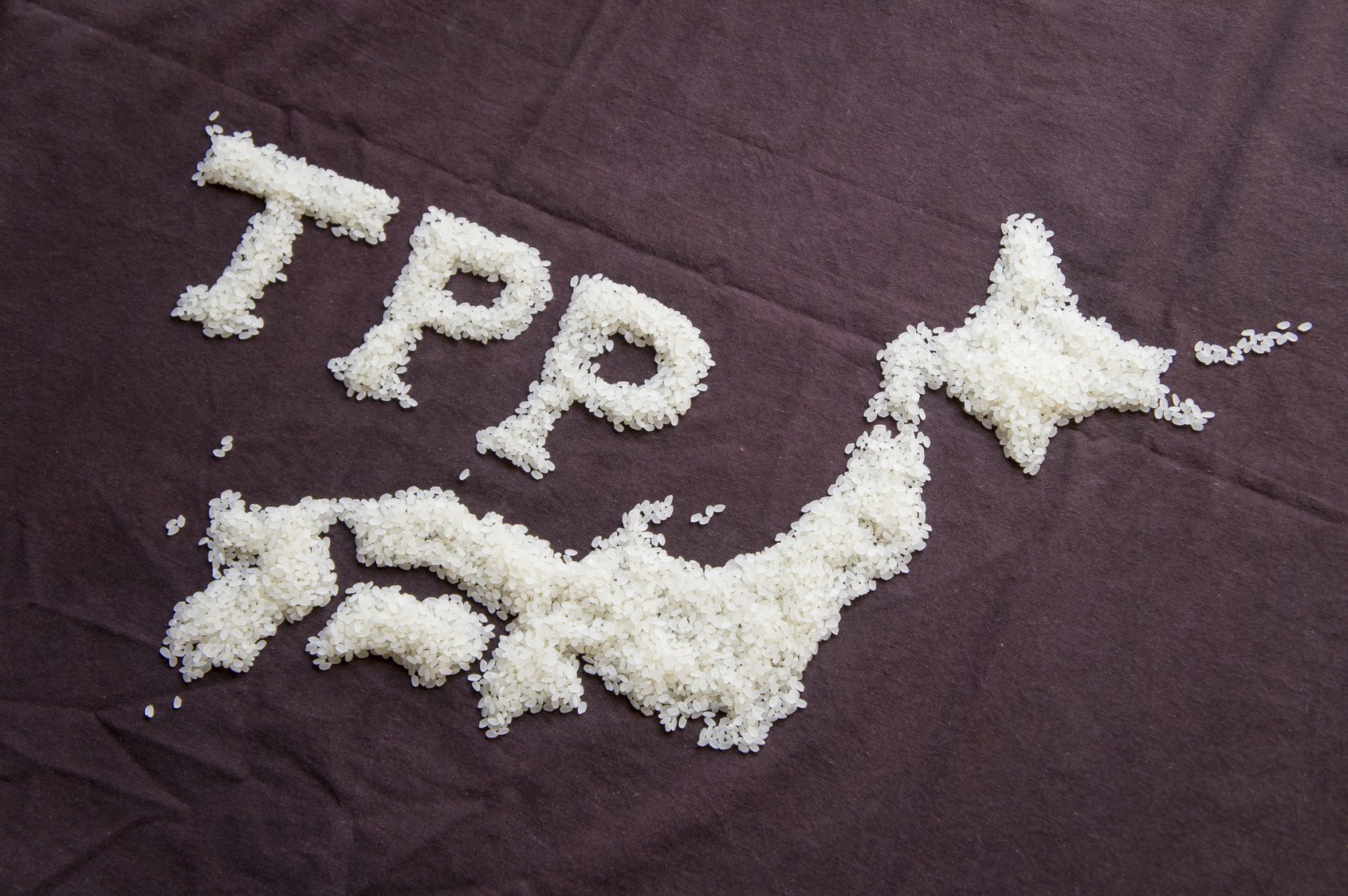Argentina is the fastest growing e-commerce market in Latin America with a booming m-commerce segment. Blessed with high internet smartphone penetration rates, the country sets stage for plentiful e-commerce opportunities. However, Argentina is still battling high inflation and low economic growth rates, a fact that bleaks growth prospects of e-commerce market. Much like its regional neighbors, Argentina is also plagued with logistics and payment issues, and resolving these challenges is the need of the hour.
This article is part of a series focusing on e-commerce in LATAM, which also includes a look into e-commerce market in Mexico and Brazil
What is pushing the meteoric growth?
Home to MercadoLibre (Latin America’s most popular e-commerce site), Argentina, is one of the most prominent e-commerce markets in Latin America, known for its outstanding growth rate – between 2018 and 2022, e-commerce market is expected to increase by 83% to reach US$ 19 billion.
Strong connectivity is one of the key supporting factors powering the e-commerce market. Argentina benefits from incredibly high internet penetration rate of more than 80% and one of highest numbers of mobile Internet users in Latin America. Further, the country’s growing young, Internet-savvy consumer base, with sufficient disposable income, is also driving e-commerce sales.
What is holding back Argentina’s e-commerce market?
Logistics
The most significant barrier restraining Argentina from becoming Latin America’s e-commerce leader is logistics. To begin with, quality of roads in certain neighborhoods of various cities, even in the capital city of Buenos Aires, is not suitable for swift deliveries. An average delivery time for packages to reach shoppers is about seven days, which is not a convenient wait time and could dissuade shoppers from ordering online.
An average delivery time for packages to reach shoppers is about seven days, which is not a convenient wait time and could dissuade shoppers from ordering online.
Most logistics companies are unable to deliver as quickly and reliably as e-retail demands. Adding to the list of logistics and infrastructure insufficiencies is the unfinished GPS mapping, owing to confusing address systems and missing postal codes, thus, making deliveries an even more cumbersome task. With the current state of logistics, Argentina secured 61st rank (out of 160) in the Logistics Performance Index in 2018, lagging behind its fellow competitors (in the e-commerce space), Brazil and Mexico.
Payment methods
Online payments can be challenging in Argentina, particularly, for making purchases on international retailers’ websites. More than 50% of Visa and MasterCard cards provided by local banks, cannot be used on international websites. This is a major operational hurdle for international e-commerce retailers, who have to set up other payment methods.
More than 50% of Visa and MasterCard cards provided by local banks, cannot be used on international websites.
Moreover, with exorbitant credit card interest rates (according to the Central Bank of Argentina, credit card interest rates lie between 36% and 111%), customers have become vary of shopping online.
Additionally, debit cards comprise a negligible share of Argentinian e-commerce spend, as they can only be used on limited e-commerce websites, thus, limiting use of this crucial payment gateway.
Distrust
Another key challenge is distrust among several Argentinians toward e-commerce websites, especially when it comes to billing and payment transactions. Some customers are also hesitant to provide card details for online transactions with protection of information being their primary concern.
With no proper legislation in place, trust in the e-commerce marketplace is hard to build. Argentina does not have a comprehensive regulatory scheme governing e-commerce, rather it has just a few regulations that are applicable to e-commerce.
The country also does not adhere to any standard international e-commerce model such as UNCITRAL model law on electronic commerce by the USA or Directive 2000/31/EC (Directive on electronic commerce) of the European Parliament. Without any robust regulation in place, consumers would neither feel protected nor be certain regarding action being taken in case of unlawful activities.
Economy
Argentina’s economy is shackled with sky-high inflation rate (second highest in Latin America in 2018) and depreciating currency against dollar, thus, dampening economic growth prospects of the country. Poor economic conditions have taken a toll on all economic sectors, including e-commerce. High inflation rate has decreased purchasing power of consumers, who have become cautious shoppers.
Opportunities still exist
Nonetheless, outlook for Argentina’s e-commerce market is quite positive, with key e-commerce players craving for attention from Argentina’s proliferating online customer base.
Argentina’s e-commerce market is endowed with opportunities arising from growing m-commerce and social-commerce segments.
Argentina’s e-commerce market is endowed with opportunities arising from growing m-commerce and social-commerce segments.
Smartphones are increasingly becoming the key mode to reach consumers in Argentina, with consumers preferring to use mobile devices for accessing internet over stationary computers or laptops. The use of mobile phones for searching products before purchase is a common habit in Argentina. To tap this opportunity, businesses are increasingly focusing on building mobile-friendly websites – as of May 2018, 74.3% of businesses adapted sites to mobile phones (compared with only 10.4% in 2017).
Another trend emerging in the market is that of social shopping (shopping influenced by social media), fueled by growing social media engagement among Argentinians – as of January 2018, about 76% of the total population were active social media users. E-retailers are now using social networks to interact with shoppers, particularly the young demographic, and also to promote products. As of May 2018, 73.5% of businesses used social media to engage with shoppers and the most preferred sites were Facebook and YouTube.
EOS Perspective
Argentina’s e-commerce industry has reached a stage where consumers, particularly the young demographic, are slowly beginning to embrace online shopping as part of their daily lives, however, there is still scope for a lot of development for wider adoption. While Argentina’s e-commerce market is dynamic and growing, it could benefit from certain improvements, particularly in terms of payment methods, logistics, and building consumer’s trust in online shopping.
Payment methods need to be kept up to date with requirements of businesses and consumers, and steps are being taken for its betterment. Better logistics is a requisite for online retailing to function properly. In the era of one-day deliveries, a week’s wait time in Argentina is too long, and retailers are looking to resolve this issue.
MercadoLibre, the largest e-retailer in Argentina, has taken giant leaps for betterment of both payment mechanism and logistics. The company introduced a digital wallet, Mercado Pago, through which both debit and credit card payments can be processed. The digital wallet can be used in physical stores as well. Customers can scan QR code on items using MercadoLibre or Mercado Pago apps and choose preferred mode of payment.
Further, MercadoLibre has been adopting various measures to improve logistics. Through Mercado Envios, the company takes care of package shipment and delivery, as the seller only has to take the package to nearest dispatch center of MercadoLibre, and from there onwards MercadoLibre ensures seamless package delivery. Mercado Envios ascertains that the package reaches customer in the shortest time possible and allows tracking of shipment by both seller and buyer. MercadoLibre’s another program, Mercado Envios Flex, guarantees deliver of packages within 24 hours, but it is limited to Buenos Aires for now.
Undoubtedly, customer service and shopping experience need to be revamped, which could help in building customer’s trust as well.
Undoubtedly, customer service and shopping experience need to be revamped, which could help in building customer’s trust as well. The e-commerce platforms could use foreign digital expertise to develop websites that are safe for billing and money transactions. Moreover, online merchants need to understand that a transaction is not complete when a customer purchases product online, but when the package is received by the customer. To be able to gain customer’s confidence, merchants should take end-to-end responsibility, be transparent in communication by clearly stating the delivery timelines or any additional charges that are applicable, among others, before the payment is made.
Nonetheless, Argentina is slowly making progress and is on track to uphold its position as one of the e-commerce giants in Latin America. Despite being the fastest growing e-commerce market in Latin America, Argentina is still behind the two e-commerce powerhouses, Mexico and Brazil, at least as of now. However, the country definitely has the potential to give them both a tough competition with its e-commerce and m-commerce markets growing at exponential rates.





